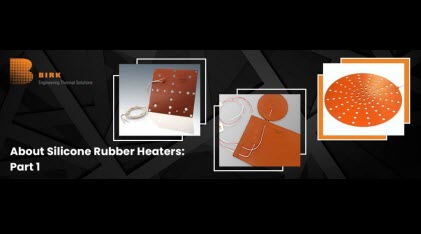Silicone rubber heaters are thin, flexible heating solutions that can be adhered or laminated to a variety of different substrates that require elevated, stable temperatures. Constructed using wire-wound or etched foil heating circuits that are then laminated between two thin layers of silicone, these resilient, reliable heaters are optimal for delivering uniform heat. Customized circuitries allow for heaters to have multiple heated zones, varying watt densities, dual voltages, and precise temperature control where it’s required. Due to their geometric customizability and flexibility, silicone heaters are perfect for dynamic and static applications. They can be implemented into existing designs or fully customized to become a plug-and-play system with integrated temperature sensors, TSTATs, and connectors.
Would you like to learn more about silicone rubber heaters and how they can help you improve your system’s thermal stability? Or generate better heat uniformity throughout your application? This post—the first of two parts —will better help you to understand the basics of the silicone rubber heater’s capabilities and its applications.
The Benefits of Choosing Silicone Rubber Heaters
As mentioned earlier, silicone rubber heating solutions are available in a wide range of specifications to meet varying application requirements of the customers. Designed to initiate maximum heat transfer and maintain thermal uniformity, silicone rubber heaters possess several advantages over polyimide heaters. Here are a few.
- Available in square, rectangular, round, and custom shapes, silicone rubber heating solutions feature rugged construction so that they aren’t affected by repeated mechanical shocks.
- These heaters are best in applications with limited space or weight requirements.
- Manufactured with silicone rubber material that is moisture and chemical-resistant, these heaters are a great choice for applications involving oils, solvents, radiation, and severe environmental conditions.
- They have a life expectancy of over 10 years and are manufactured to meet the requirements of various low and medium temperature applications.
- Silicone rubber heaters are available for full turn-key solutions allowing the integration of thermocouples, RTDs, and wiring harnesses, among others.
Designed for direct bonding to an application, silicone rubber heaters help achieve the most efficient heat transfer. Known to provide outstanding performance, they are largely used in applications across several industries. To find out more about their typical applications along with the mounting options, stay tuned for the next post!
